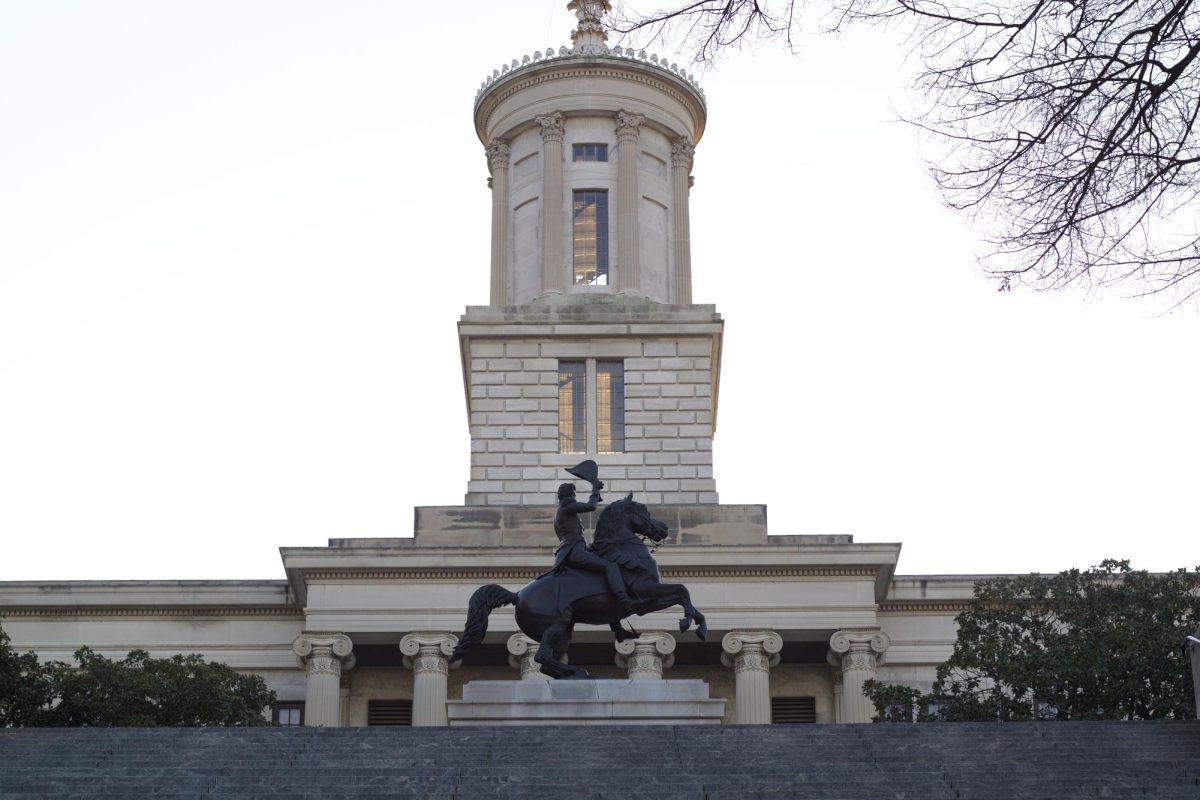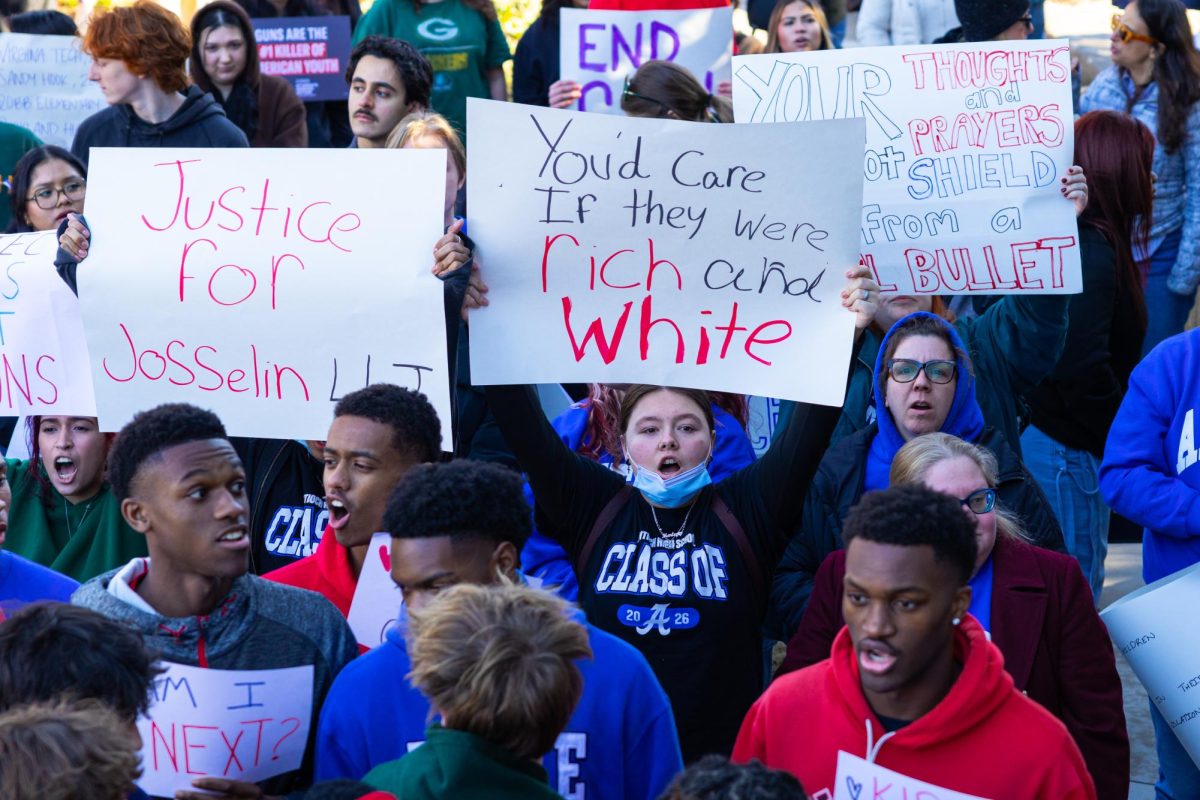Story by Aiden O’Neill
Featured photo by Kailee Shores
As the end of the fall semester approaches, finals season has arrived with its inevitable byproduct: burnout. College students are being deluged with deadlines, kept awake by exorbitant amounts of caffeine and trading tranquility for A’s. With stress being amplified by this fateful time of the year, why don’t we see the same symptoms of burnout in each student?
Every student is different when it comes to how they manage their stress, and how they choose to present it to their peers. Personality types help narrow down these behaviors into four attainable boxes: Type A, Type B, Type C and Type D. Even if it seems like your classmate is holding it together effortlessly, burnout is not an isolated epidemic.
The most well-known personality types are Type A and Type B. Type A, “The Director,” is best identified as goal oriented, courageous, motivated by pressure and efficient. Type B, “The Socializer,” is more relationship oriented, outgoing, and eager. The less referenced, but just as common, personality types are Type C and Type D. Type C, “The Thinker,” is detail-oriented, logical and prepared. Type D, “The Supporter,” is task-oriented, stabilizing and cautious according to Hire Success.
Type A
Type A students have a few core fears or struggles that contribute to their burnout. This personality type thrives on efficiency and is a victim of the instant gratification bias. That being said, this type typically struggles with long descriptions or drawn-out lessons. Once they’re nearing the end of the semester, they’ve been in the same routine for far too long. Being stuck in this loop of tasks wears them down until they find something new to obsess over. There is also a lot of pride connected to this personality type. If there is an assignment they don’t do well on or they get negative feedback, it causes them to completely shut down.
Type A students tend to persist through the burnout without a complaint to their peers. It’s important to them that they don’t seem inadequate. They also have a deep fear of being seen as vulnerable in a work or school environment. Instead, they typically withdraw socially and have a lot of internal distress.
“For media in general, we bounce around from one project to the other. We enjoy the adrenaline of it and wear the exhaustion as a badge,” said a student with a Type A personality who requested to remain anonymous.
Type B
Type B students are more socially oriented than Type A, so they have significantly different circumstances that contribute to their burnout. While Type A is more concerned with how they feel about their work, Type B focuses on how others perceive them. They typically begin to burn out when they feel underappreciated or are viewed as uninvolved by their peers. When they’re working hard on a task and don’t get the recognition they crave, it tends to have a negative effect on their motivation. Type B students also fear appearing unsuccessful or their work being seen as unacceptable in a professional environment. This anxiety leads them to taking on more than they can handle and developing a people pleasing mindset.
“The stress of getting a certain GPA, maintaining my scholarships and lack of sleep contribute to my burnout the most. I’m a first-year student, so it’s important to me that I keep up with the workload. I want my portfolio to show that I’ve worked hard and done everything in my power to get involved,” said Halle Ledbetter, a Sports Media major who falls in the Type B category.
Type B students respond to stress by talking to their peers about it. The feeling of community and knowing that they aren’t alone helps them stay calm. They tend to take on more responsibilities during busy seasons because they allow others to unload their work onto them. This can also be caused by an overcorrection to their stress-induced anxieties about being inadequate.
Type C
Type C students are focused individuals that are fueled by strength. These students fear losing control or being distracted from what they’re working on. In order to maintain control, they implement strict rules to keep themselves in line. Their love of structure is mindset-based and that shines most in stressful situations. If their mindset wavers or they’re being led by someone that they don’t respect, they begin feeling defeated. Type C students are their own disciplinary officers, so they feel a lot of shame when they don’t follow their own rules.
When burnout effects a Type C student, their instinct is to devise a plan to fix it. They’ll participate in any guidelines that will change how they feel. This isn’t due to a fear of failing those around them, but rather failing themselves. Type C students will admit to the burnout they feel, but they refuse to dwell on it.
“Burnout has no effect on me because it’s more of a marker of where I’m at mentally. When I’m feeling that way, I just have to adjust. The military helps me cope with it because it implements discipline into my life,” said Dan Balman, a Type C military cadet.
Type D
Type D students are similar to Type C because they thrive on structure. Their structure, however, is more routine based. Type D personalities are deeply afraid of instability and the unknown. This fear is amplified by a chapter coming to an end. The stability in a known schedule makes these students feel safe. As long as they are moving and know what’s coming next, they stay zoned in. When a break from school or the end of a semester comes around, they begin feeling the effects of burnout.
“I feel like burnout happens seasonally for me due to breaks from school. I’m the most motivated when my workload is heavy and zoning in is my only option,” said Ava Houghton, a Type D Interdisciplinary Media major.
Like Houghton said, Type D personalities deal with burnout by pushing through the stress. Finding a new routine and organizing it strategically relieves them most efficiently. Similarly to Type C, they’re not opposed to discussing burnout, but they’d rather fix the issue at hand.
Regardless of what personality type a student is, everyone experiences burnout in their own way. Try to take heart in the fact that we’re all dealing with the stresses of this time of year, even if it doesn’t appear that way on the outside. With that being said, it’s important to learn more about yourself and adjust according to what works best for you.
“Even if we don’t talk about it, knowing everyone’s dealing with it is comforting,” said Houghton.
Aiden O’Neill is a writer for MTSU Sidelines.
To contact News Editor Kailee Shores, Assistant News Editor Alyssa Williams and Assistant News Editor Zoe Naylor, email [email protected].
For more news, visit www.mtsusidelines.com, or follow us on Facebook at MTSU Sidelines or on Twitter and Instagram at @mtsusidelines.







